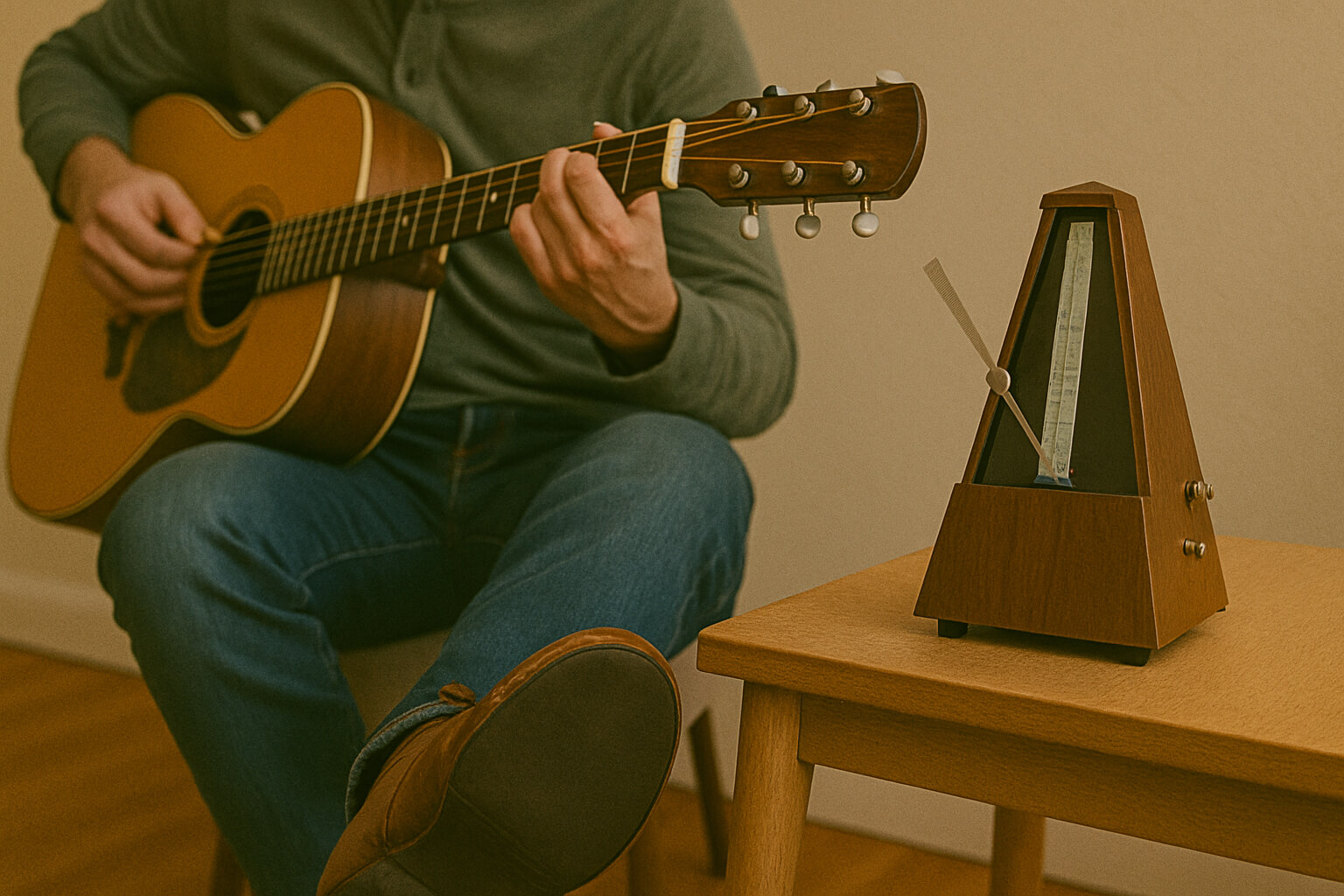August 08, 2025

Rhythm is the heartbeat of music. It's the core that drives the energy in every song, and it’s essential for any musician, whether you’re just starting out or have been playing for years. Having a good grasp of rhythm makes all the difference — it keeps you on track and helps your music come to life. Let's dive deeper into the basics!
Rhythm is defined as the pattern of sounds and silences in music. It's created by organizing beats (the basic units of time in music) and rests (the silent moments between them). Think of it as the structure or framework that gives music its forward momentum.
Understanding rhythm is essential for staying in time with others, whether you're playing in a band, jamming with friends, or just playing along to a song by yourself.
The Role of Rhythm in Music — Why Timing is Everything
Think of a beat as the basic unit of time in music — like a pulse. You’ll often hear it referred to as the "tick" in a clock, except it's more fun!
Tempo is simply the speed at which the beats happen. It’s measured in BPM (beats per minute). A faster tempo means more beats in a minute, while a slower tempo means fewer beats.
The metronome is your best friend when it comes to practicing rhythm. It provides a steady beat so you can stay in sync. You can adjust the tempo to your comfort level and gradually increase the speed as you improve.
Practicing with a metronome is a great way to develop your sense of timing and rhythm accuracy. You can even use it to set different tempos and rhythms to experiment with your playing.
Practice Makes Perfect — Effective Strategies for Improving Musical Skills
The time signature is the signature of rhythm. It tells you how many beats are in each measure (the bar or section of music) and what type of note gets the beat.
Once you understand time signatures, rhythm feels more intuitive. You'll also be able to figure out how to count through more complex pieces of music.
Beginner’s Guide to Understanding Music Genres
One of the easiest ways to practice rhythm is without your instrument! There are plenty of ways to build a strong sense of rhythm just by using your body.
These activities may seem simple, but they’ll help you internalize rhythm and timing. Over time, your ability to stay on beat will become second nature.
Music Learning Tips for People Who Think They’re “Tone Deaf”
Once you’ve practiced with clapping and tapping, it’s time to apply rhythm to your instrument.
Keep practicing in a consistent and structured way, and rhythm will feel like a natural part of your playing.
How to Stay Motivated When Learning an Instrument
Rhythm is more than just a musical concept; it’s the foundation of every piece of music you’ll encounter. By practicing beats, tempos, and time signatures regularly, you'll be able to confidently stay in time with any song or performance.
Remember: rhythm is a skill that can be developed with patience, consistency, and practice. Use simple tools like a metronome, keep challenging yourself with new rhythms, and don’t be afraid to experiment. Over time, rhythm will feel as natural as breathing!
Check out more resources to improve your musical skills and rhythm:
Stay up to date with the latest tips, expert insights, product reviews, and step-by-step guides to help you grow, create, and succeed—no matter your industry or passion.